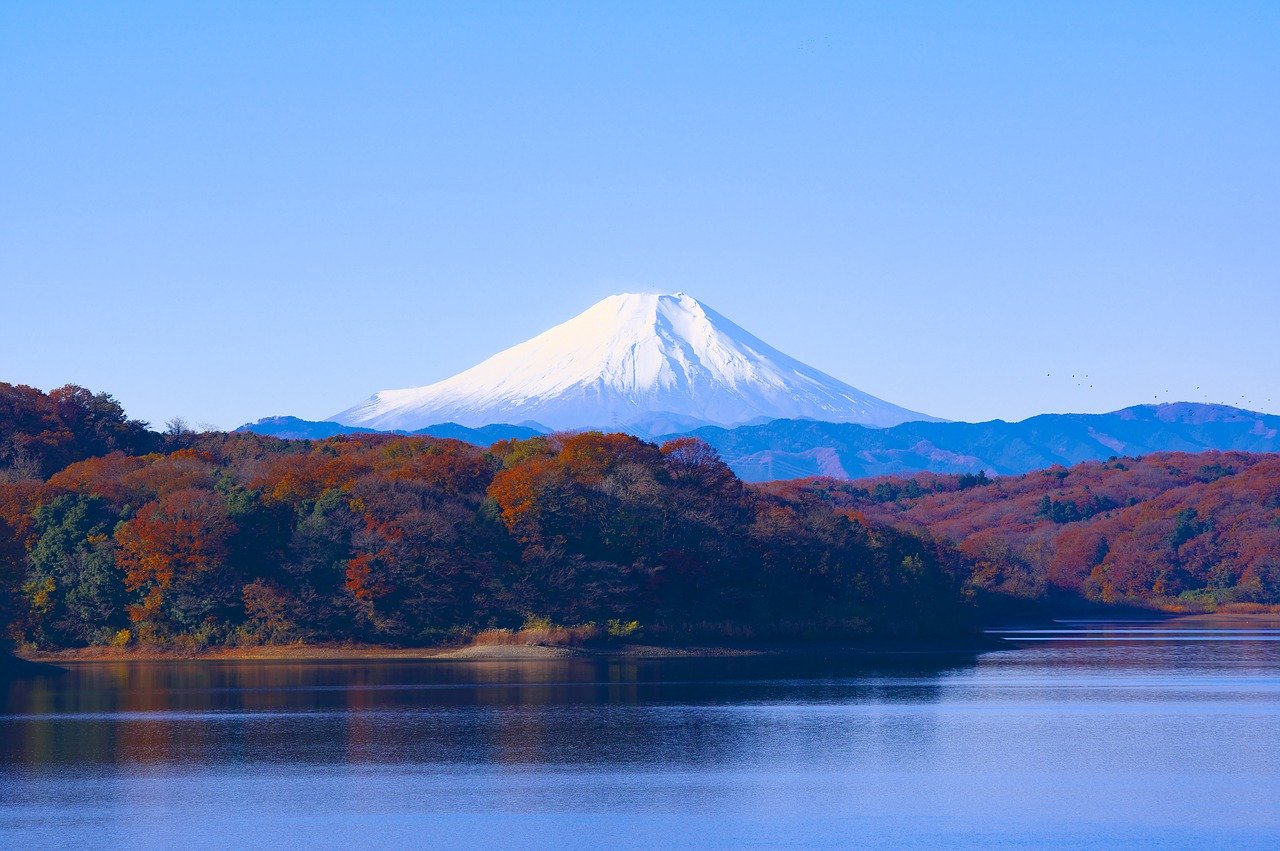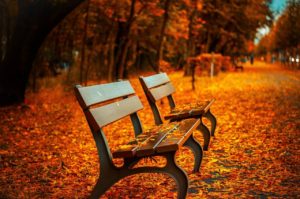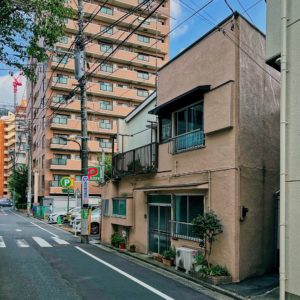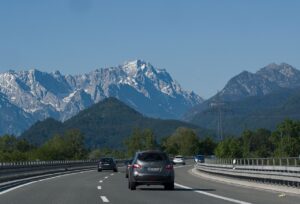In this post we’ll learn some vocabulary and expressions that you can use to talk about the natural world.
花、木、草、空気 hana, ki, kusa, kūki Flowers, Trees, Grass, and Fresh Air
Let’s start with some basics of nature that you can find around you even if most of the nature you see is in a park: 木 ki (a tree), 花 hana (a flower), 庭 niwa (a garden), 草 kusa (grass), 植物 shokubutsu (a plant), 湖 mizūmi (a lake), 池 ike (a pond), 道 michi (a path), 林 hayashi (woods). You’re probably not going to see much wildlife in a park, but if you’d like to know how to talk about the animals you do see, check out this post.
- 公園にたくさんの木があります。
Kōen ni takusan no ki ga arimasu.
There are lots of trees in the park. - あのきれいな花を見てください。
Ano kirēna hana o mite kudasai.
Look at that beautiful flower. - 芝生の上に座りましょう。
Shibafu no ue ni suwarimashō.
Let’s sit in the grass.
- 庭の隣のベンチに座りましょう。
Niwa no tonari no benchi ni suwarimashō.
Let’s sit on the bench next to the garden. - 林に道が通っています。
Hayashi ni michi ga tōtte imasu.
There’s a path through the woods. - 池の周りを歩きましょう。
Ike no mawari o arukimashō.
Let’s walk around the pond. - 湖に魚がいますか。
Mizūmi ni sakana ga imasu ka.
Are there fish in this lake? - 湖は浅いですか、深いですか。
Mizūmi wa asai desu ka, fukai desu ka.
Is the lake shallow or deep?
木と植物 Ki to Shokubutsu: Trees and Plants
No matter where we are, there’s usually some kind of plant life around us, even if it’s in a pot in the corner of your office: 観葉植物、植木 kan’yō shokubutsu, ueki (houseplant), 植木鉢 uekibachi (flowerpot), バラ bara (rose), とげ toge (thorn), 土 tsuchi (soil), 葉、葉っぱ ha, happa (leaf), どんぐり donguri (acorn), 茎 kuki (stem), 種 tane (seed), 木の実 kinomi (nut), 植木に水をやる ueki ni mizu o yaru (to water a plant), 種をまく tane o maku (to plant a seed), 咲く; 花が咲く saku; hana ga saku (to bloom; flowers bloom), 育つ; 植物が育つ sodatsu; shokubutsu ga sodatsu (to grow; plants grow).
- 植木に水をやらなければいけません。
Ueki ni mizu o yaranakereba ikemasen.
I need to water my plants. - 観葉植物がたくさんあります。
Kan’yō shokubutsu ga takusan arimasu.
We have a lot of houseplants. - きれいな植木鉢ですね。
Kirēna uekibachi desu ne.
That’s a beautiful flowerpot. - あの植木の葉が茶色くなってきています。
Ano ueki no ha ga chairoku natte kite imasu.
That plant’s leaves are turning brown. - 木からどんぐりが落ちてきます。
Ki kara donguri ga ochite kimasu.
Acorns are falling from the tree. - バラは茎にとげがあります。
Bara wa kuki ni toge ga arimasu.
Roses have thorns on their stems. - あの木は楓ですか、樫ですか。
Ano ki wa kaede desu ka, kashi desu ka.
Is that tree a maple or an oak? - 松は冬も緑色です。
Matsu wa fuyu mo midori iro desu.
Pine trees are green in the winter. - 庭にトマトの種を植えました。
Niwa ni tomato no tane o uemashita.
I planted tomato seeds in the garden. - 花は春に咲きます。
Hana wa haru ni sakimasu.
The flowers bloom in the spring. - 庭の植木がぐんぐん育っていますね。
Niwa no ueki ga gungun sodatte imasu ne.
The plants in your garden are growing quickly.
丘、川、谷 Oka, Kawa, Tani Hills, Rivers, and Valleys
Let’s add some more nature vocabulary: 丘 oka (hill), 谷 tani (valley), 川 kawa (river), 小川 ogawa (stream), 滝 taki (waterfall); 野原 nohara (field), 牧草地 bokusōchi (meadow), 岩 iwa (rock), 玉石 tamaichi (boulder), 沼 numa (swamp).
- 家は丘の上にあります。
Ie wa oka no ue ni arimasu.
Our house is on a hill. - 川の隣に住んでいます。
Kawa no tonari ni sunde imasu.
We live next to a river. - ここの川の流れは速いです。
Koko no kawa no nagare wa hayai desu.
The river runs quickly here. - 近くにきれいな滝があります。
Chikaku ni kirēna taki ga arimasu.
There’s a beautiful waterfall nearby. - 谷にたくさんの農場があります。
Tani ni takusan no nōjō ga arimasu.
There are a lot of farms in the valley. - 家の近くの森に小川が流れています。
Uchi no chikaku no mori ni ogawa ga nagarete imasu.
There is a little stream in the woods near our house. - 野原を歩いて横切りました。
Nohara o aruite yokogirimashita.
We walked across the field. - 牧草地にきれいな野花が咲いています。
Bokusōchi ni kirēna nobana ga saite imasu.
There are beautiful wild flowers in the meadow. - 丘の中腹にたくさんの岩や玉石があります。
Oka no chūfuku ni takusan no iwa ya tamaishi ga arimasu.
There are a lot of rocks and boulders on the hillside. - この道は沼を通ります。
Kono michi wa numa o tōrimasu.
This road goes through a swamp.
山と森 Yama to Mori Mountains and Forests
If you ever get to the mountains, you may need to say: 山 yama (a mountain); 山脈 san’myaku (a mountain range); 山頂 sancho (the summit of the mountain); 山でハイキングをする yama de haikingu o suru (to hike in the mountains); 山登りをする yamanobori o suru (to climb a mountain); 峰 mine (a peak); 崖 gake (a cliff); 森 mori (a forest); 森でキャンプをする mori de kyanpu o suru (to camp in the forest); 松 matsu (pine trees); 楓 kaede (maple trees); 樫 kashi (oak trees); 白樺 shirakaba (birch trees); 野生動物 yasē dōbutsu (wild animals).
- この国には二つの山脈があります。
Kono kuni ni wa futatsu no san’myaku ga arimasu.
There are two mountain ranges in this country. - 窓からきれいな山が見えます。
Mado kara kirēna yama ga miemasu.
We can see beautiful mountains from our window. - この山の山頂の高さはどのぐらいですか。
Kono yama no sanchō no takasa wa donogurai desu ka.
How high is the summit of this mountain? - 山の峰が雪で覆われています。
Yama no mine ga yuki de ōwarete imasu.
The mountain peaks are covered in snow. - この崖の高さはどのぐらいですか。
Kono gake no takasa wa donogurai desu ka.
How high are those cliffs? - 森でキャンプをするのが好きです。
Mori de kyanpu o suruno ga suki desu.
I like to camp in the forest. - この森には{松・楓・白樺・樫}があります。
Kono mori ni wa {matsu/kaede/shirakaba/kashi} ga arimasu.
There are pine trees/maple trees/birch trees/oak trees in this forest. - この森に野生動物はいますか。
Kono mori ni yasē dōbutsu wa imasu ka.
Are there wild animals in this forest?
世界 Sekai The World
Let’s finish with some geographical terms that you can use to talk about the natural world. 大陸 tairiku (continent), 海 umi (ocean, sea), 湾 wan (bay), 海岸 kaigan (coast), 島 shima (island), 半島 hantō (peninsula), 砂漠 sabaku (desert), ジャングル janguru (jungle), 氷河 hyōga (glacier), 氷山 hyōzan (iceberg), 北極・南極 hokkyoku/nankyoku (north/south pole), 北・南・東・西 kita/minami/higashi/nishi (north/south/east/west).
- 大陸はいくつありますか。
Tairiku wa ikutsu arimasu ka.
How many continents are there? - 海は広くて深いです。
Umi wa hirokute fukai desu.
The ocean is wide and deep. - 海で泳ぐのが大好きです。
Umi de oyoguno ga daisuki desu.
I love swimming in the sea. - 川は湾に注ぎます。
Kawa wa wan ni sosogimasu.
The river empties into a big bay. - 海岸線に沿ってドライブしました。
Kaigansen ni sotte doraibu shimashita.
We drove along the coast. - 島へはフェリーで行かなければいけません。
Shima e wa ferī de ikanakereba ikemasen.
You have to take a ferry to get to the island. - 砂漠は暑くて乾燥しています。
Sabaku wa atsukute kansō shite imasu.
The desert is hot and dry. - ジャングルには色々な植物や動物が生息しています。
Janguru ni wa iroirona shokubutsu ya dōbutsu ga sēsokushite imasu.
Many different plants and animals live in the jungle. - 氷河はどんどん小さくなっていっています。
Hyōga wa dondon chīsaku natte itte imasu.
The glaciers are getting smaller and smaller. - {北極・南極}の近くの海には氷山があります。
{Hokkyoku/Nankyoku} no chikaku no umi ni wa hyōzan ga arimasu.
There are icebergs in the ocean near the north/south pole. - 太陽は東から昇って西に沈みます。
Taiyō wa higashi kara nobotte nishi ni shizumimasu.
The sun rises in the east and sets in the west.
Learn Japanese with the Language Garage
Check out our other posts on Japanese language, culture, and more. And if you’re looking for convenient and affordable live Japanese lessons with a real teacher, check out the Language Garage. Our lessons are given online in a virtual classroom, so it doesn’t matter where you live or work – we can come to you. And we have flexible options, with a free trial so that you can decide if there’s a fit. Check us out!






